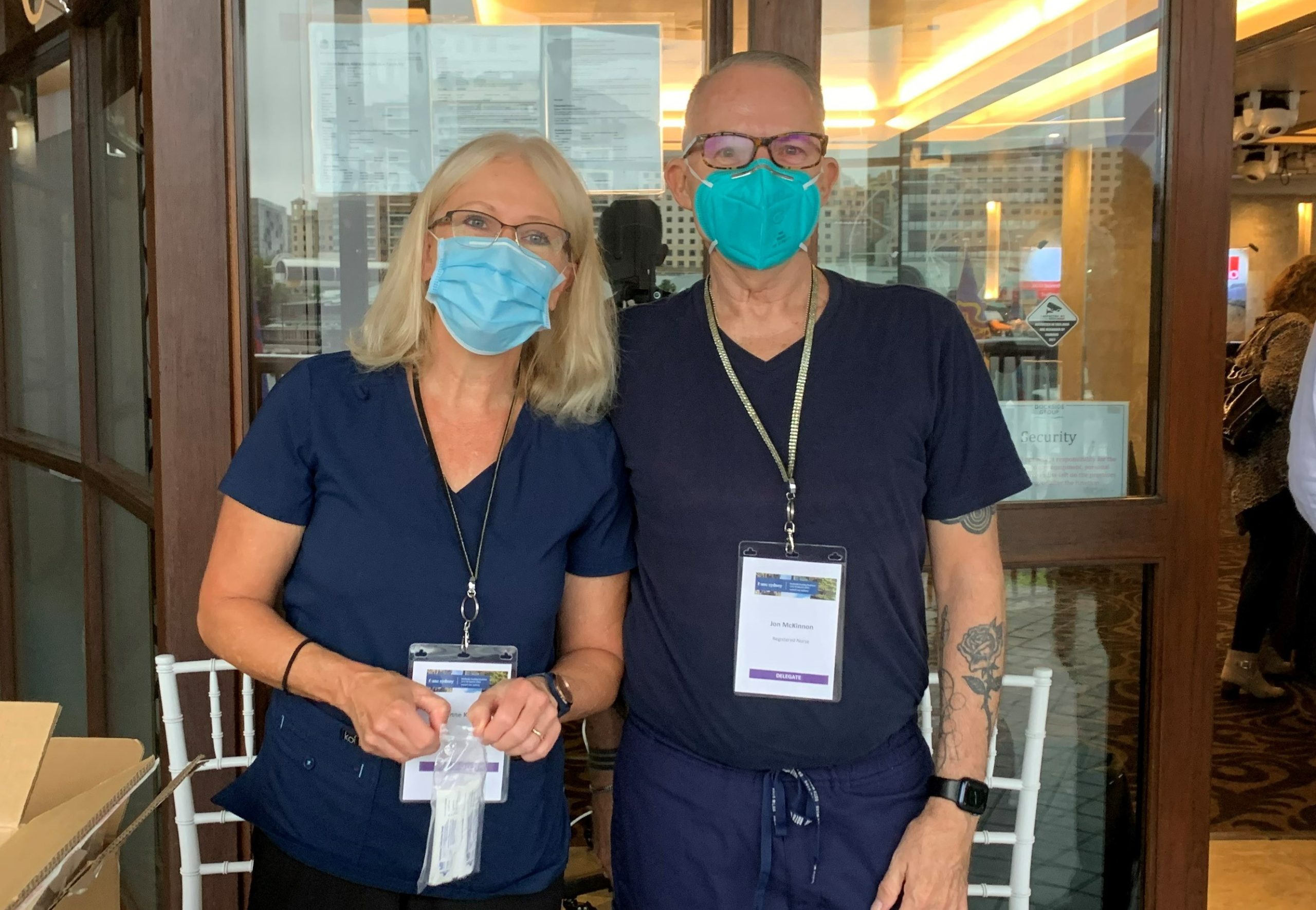While a strategic meetings management programme (SMMP) is a strategy around the total amount of money spent on events and can lead to significant cost-savings, there is much more to it than that, analysts and planning experts agree.
Its original definition, by the Global Business Travel Association, more than a decade ago, defines it as, “the disciplined approach to managing enterprise-wide meeting and event-related processes, activities, metrics, standards and supplier strategies to achieve business objectives, quantitative cost savings, risk mitigation and optimal service levels”.
The process of implementing strategic meetings management (SMM) is technology-driven, the proprietary software packages being StarCite, owned by the Texas-based Lanyon meetings and travel solutions company, and Cvent, named after its parent Virginia-headquartered online events management and planning company.
 Kevin Iwamoto, Lanyon’s vice president, industry strategy, says SMM is the answer to many companies’ “manual, inefficient, and extraordinarily expensive” approach to organising events and meetings.
Kevin Iwamoto, Lanyon’s vice president, industry strategy, says SMM is the answer to many companies’ “manual, inefficient, and extraordinarily expensive” approach to organising events and meetings.
“The right strategy partnered with the latest technology can automate those processes, improve the value of in-person meetings and provide great outcomes,” he says.
“Most companies do not fully realise the level of investment they are making in meetings, events and travel. A recent study showed that nine per cent of a company’s budget, and up to 24 per cent of a marketing department’s budget, are spent on meetings, events and travel. If this were a line item on an income statement it would be one of the single largest expenses in the company. Many are spending a significant amount of money with little view of the return.
“A successful SMM programme should deliver a significant return on this initial investment. Independent research by Hobson and Company of Lanyon customers put the average return on a three-year investment by our clients to be 251 per cent,” Iwamoto says. “The level of investment can be marginal by starting off with a small meetings technology solution that can be scaled into a larger more comprehensive SMMP.”
In addition to cost-savings, though, an automated and holistic approach to the organisation of meetings has many other benefits, and Iwamoto cites Adobe as an example of a corporation that has successfully implemented SMM at its annual summit of more than 5,000 marketing and technology leaders.
“By introducing a technology-led strategic meetings management programme, Adobe has been able to customise content, break down logistical barriers and use detailed reporting metrics to link back to revenue goals and sales opportunities,” he says, and quotes Adobe’s senior corporate events manager Mike Stiles as saying, “By tracking attendee participation, we can learn what products they’re interested in, and provide that information directly to the sales team.”
In addition to cost-savings and automated feedback, there are also crucial issues of legality and compliance that a manual, fragmented approach to organising meetings and travel can put at risk, as Belinda Doery, Asia Pacific regional director for American Express Meetings and Events, explains.
 “In many organisations today, while travel programmes are robust, there are still many different stakeholders booking and planning meetings. This can open an organisation up to a high level of risk, both legally and financially,” Doery says.
“In many organisations today, while travel programmes are robust, there are still many different stakeholders booking and planning meetings. This can open an organisation up to a high level of risk, both legally and financially,” Doery says.
“An SMM programme defines the lifecycle of a meeting – from meeting need and approval routing, supplier and venue selection, all the way through to financial management and recognition. This approach not only mitigates an organisation’s legal and compliance risks, but also generates bottom-line savings by supplier consolidation and industry best practice.”
Lisa Hopkins, managing director, meetings and events, Asia Pacific, with BCD M&I, says meetings organised by the pharmaceutical industry are a good example of SMM mitigating risk.
“The risk aspect comes into SMMP in a variety of different ways and it is also very industry specific so, for example, if you were dealing with the pharmaceutical industry there are a whole raft of issues,” she says. “What SMMP does is to allow a very defined process of gatekeeping and structure – normally managed by an agency – to ensure the type of hotel they use is in accordance with protocols, that the allowance for healthcare professionals is not exceeded and that it is keeping with company policy.”
Hopkins says the financial services sector is another example of SMMP in action, recent successes being “saving them money, getting a better property than they would have had, or demonstrating really strong leverage”.
She says the manual “dinosaur approach” to organising meetings is both risky and expensive. “In an unstructured environment you have a whole raft of people organising events and signing off on contracts given to them by hotels – the problem being that perhaps they don’t fully understand what the contract says, or know how to negotiate some of the key clauses and mitigate exposure, or have an opportunity to leverage up the total spend.”
Hopkins says that although SMMP is a relatively new concept in Asia Pacific, it is the future. “Ten years ago we didn’t have this level of technology and the applications so critical to meetings now. The way we approach meetings has changed.”
Banish SMM myths
In a recent white paper, the online event management and registration company Cvent pinpoints five myths its researchers say surround Strategic Meetings Management.
• Myth 1: It’s too complex and hard to implement
Fact: By identifying a clear path, identifying logical phases, and taking it step-by-step, SMM can be a simple, logical process.
• Myth 2: It’s too expensive
Fact: Most organisations realise savings of 10-15 per cent within 18 months after the implementation of technology to facilitate the process, making it expensive not to consider.
• Myth 3: It only works for large organisations
Fact: SMM best practices, such as centralised meetings registration, strategic sourcing and attendee registration management, can benefit any size/type of organisation.
• Myth 4: Success requires a mandate from the executive floor
Fact: Many SMMPs have found success without an executive mandate, simply by rallying internal stakeholders toward services and solutions that make their jobs easier.
• Myth 5: Technology is the silver bullet
Fact: Technology cannot act alone – it is the facilitator of SMM, and at the centre of the entire process.
Managing travel
Despite a desire to integrate meetings, groups and events (MGE) spend into travel programmes, many companies experience difficulties when it comes to developing a global programme, according to Amanda Hanlin, director of global sales for the Hogg Robinson Group (HRG).
 “Meetings and events are inherently diverse in their nature, taking the form of board meetings, team meetings, client conferences, product launches and much more,” she says. “As such, management responsibility for MGE spend is often spread among a variety of different internal stakeholders, with no central co-ordination or control, meaning potential savings are lost.
“Meetings and events are inherently diverse in their nature, taking the form of board meetings, team meetings, client conferences, product launches and much more,” she says. “As such, management responsibility for MGE spend is often spread among a variety of different internal stakeholders, with no central co-ordination or control, meaning potential savings are lost.
“By consolidating a meetings programme you will increase the visibility and accuracy of meetingsspend, which you will then be able to leverage more effectively.”
Hanlin says HRG manages group air travel using multiple rate sourcing channels and supplier relationships to secure the best fares.
“By consolidating the booking process, this improves cost visibility and compliance, increases traveller tracking for security purposes and delivers improved billing and reconciliation mechanisms.”
An East & Partners Asia Survey reports the average travel and entertainment budget among multinational corporations in Asia for 2015 to be US$155 million per annum, with the largest, in Singapore, at US$305 million and the smallest, in Indonesia, at US$31 million.
Don’t be fazed
Many planners are “overwhelmed” by the idea of strategic meetings management, says Robert Rogers, head of the Hong Kong-based company Events Man.
Rogers, a Certified Special Events Professional, says some clients are fazed by SMM even though they have been practising a form of it for years.
“I advise them to look at their year as one big event with multiple facets,” he says. “Start with the overall goal, design the concept to achieve it, set dates and get planning. Having a plan gives stronger bargaining power in the RFP stages.
“When a client comes to me and says they are doing an event four times a year it allows me to leverage repeat business with suppliers, provides opportunities
to create sustainable eco-friendly practices, and ensure that guest experience is delivered in a structured and memorable way.”
Lisa Hopkins, managing director, meetings and events, Asia Pacific, with BCD M&I, says planners should not feel intimidated by SMM.
“People need to know that this doesn’t have to be scary,” she says. “If you have the right technology support, and the right partners, this thing can really
show value.”


